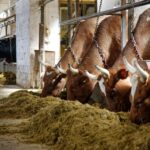Tobacco cultivation requires specialized knowledge and careful planning to ensure a successful and sustainable crop. If you are considering growing tobacco in South Africa, it is crucial to have a thorough understanding of the key aspects involved in its cultivation. In this article, we will discuss ten important things you should know before embarking on tobacco farming in South Africa.
- Legal Requirements and Licensing: Before starting a tobacco farm, familiarize yourself with the legal requirements and regulations governing tobacco cultivation in South Africa. Obtain the necessary licenses and permits from the relevant authorities to ensure compliance with the law.
- Climate and Growing Conditions: Tobacco is a heat-loving crop that thrives in warm climates. South Africa offers suitable regions for tobacco cultivation. Ensure that the climate in your chosen area, including temperature, humidity, and rainfall patterns, is conducive to tobacco growth. Select tobacco varieties that are adapted to your specific climatic conditions.
- Soil Requirements: Tobacco requires well-drained soils with good fertility and texture. Conduct a soil test to assess its nutrient content, pH level, and organic matter content. Based on the results, amend the soil with fertilizers and organic matter to optimize soil fertility and ensure proper nutrient availability for tobacco plants.
- Seed Selection: Choose high-quality tobacco seeds from reputable suppliers. Consider factors such as variety, disease resistance, and market demand. Different tobacco varieties are available, each with its own characteristics and requirements. Select varieties that are suitable for your farming goals and the specific requirements of the tobacco industry.
- Crop Rotation and Field Preparation: Implement crop rotation practices to minimize the risk of disease and pest buildup in your tobacco fields. Prepare the land thoroughly by removing weeds, tilling the soil, and incorporating organic matter. Adequate field preparation promotes healthy plant growth and maximizes yield potential.
- Irrigation and Water Management: Proper irrigation is essential for tobacco cultivation, as consistent moisture levels are crucial for optimal leaf development. Determine the appropriate irrigation system for your farm and develop an irrigation schedule based on the specific needs of tobacco plants. Efficient water management practices will help conserve water and ensure crop health.
- Pest and Disease Management: Tobacco plants are susceptible to various pests and diseases, including aphids, caterpillars, nematodes, and tobacco mosaic virus. Implement integrated pest management (IPM) strategies, such as regular scouting, crop rotation, and appropriate pesticide application, to manage pest and disease pressures effectively.
- Fertilization and Nutrient Management: Develop a comprehensive fertilization plan for your tobacco crop based on soil test results and recommended guidelines. Tobacco plants have specific nutrient requirements at different growth stages. Provide adequate amounts of nitrogen, phosphorus, potassium, and other essential micronutrients to promote healthy plant growth and high-quality leaf production.
- Harvesting and Curing: Timing is crucial when harvesting tobacco to achieve the desired leaf maturity. Harvest leaves individually as they reach the appropriate maturity level, typically indicated by their color and texture. Proper curing methods, such as air curing or flue curing, are necessary to remove moisture from the harvested leaves and develop the desired tobacco flavors and characteristics.
- Market Demand and Contracts: Before growing tobacco, assess the market demand for tobacco products, both domestically and internationally. Identify potential buyers or tobacco companies that may be interested in your crop. Establish contracts or agreements with buyers in advance to ensure a market for your tobacco and secure a fair price.
Join 'Farmers Mag' WhatsApp Channel
Get the latest Farming news and tips delivered straight to your WhatsApp
CLICK HERE TO JOIN






